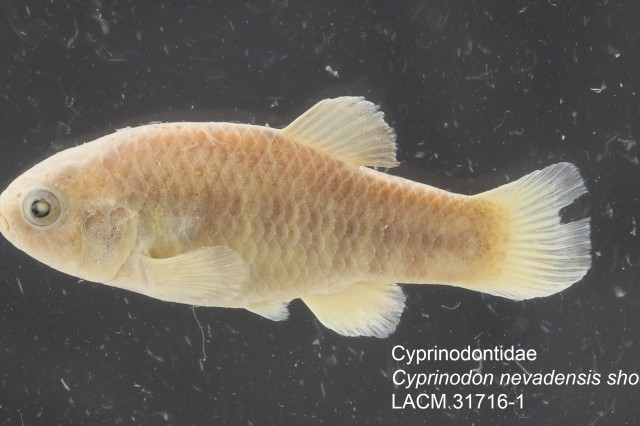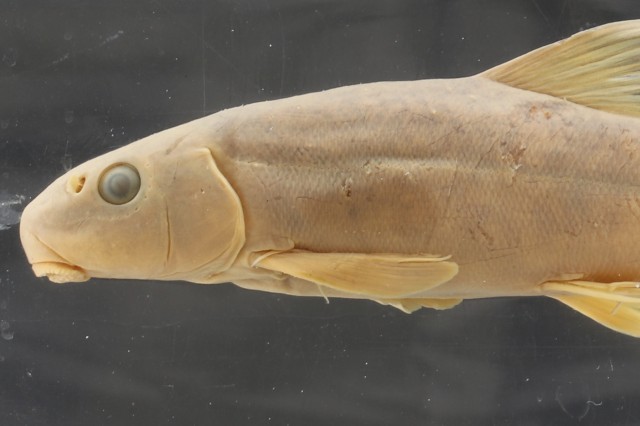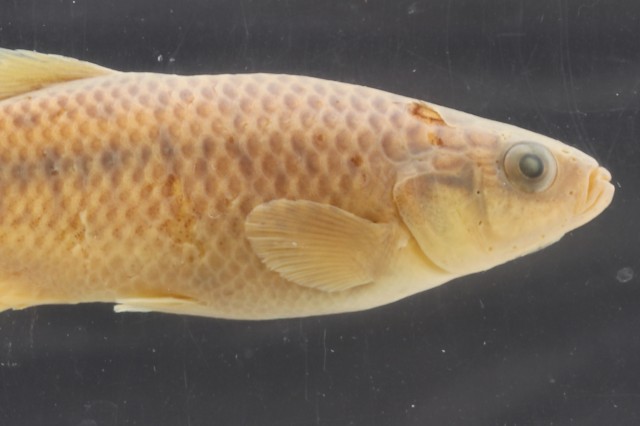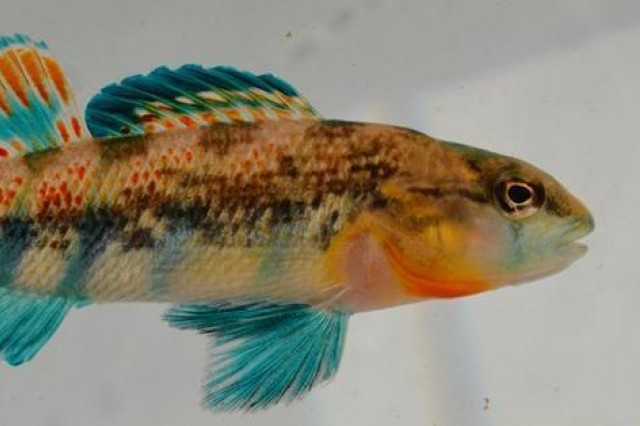Fishes Across America: Last Stop, Roanoke
Say hello to a Hog Sucker (and a couple Darters)
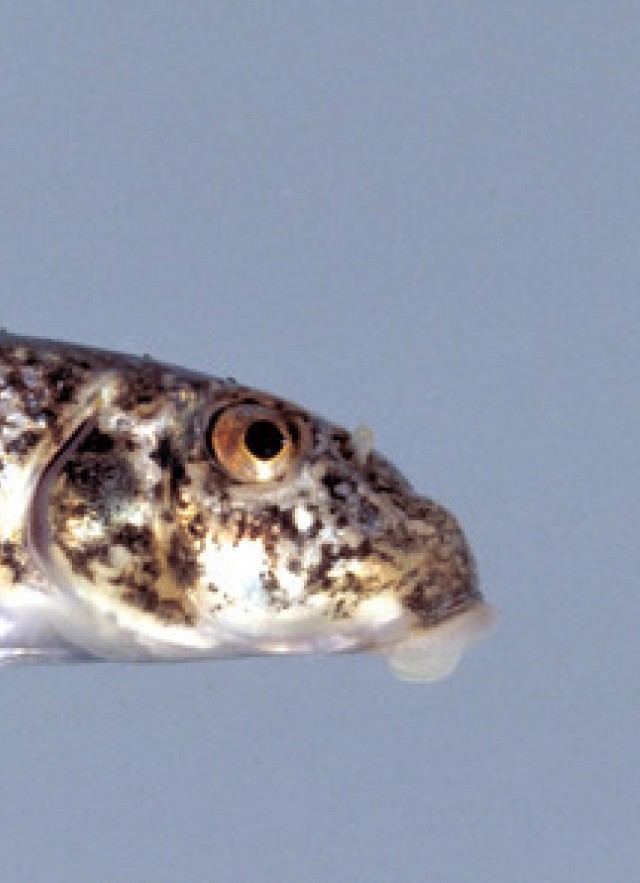
So far in our Fishes Across America trek, we have made several stops along the West Coast, the Midwest, and the mountains of Kentucky in our search for cool fish and interesting stories (links to these other adventures are provided below). Now, let’s slow down for a bit and explore fish diversity in one area. We can cruise through the Appalachian Mountains down I-40 and I-81 to Roanoke, Virginia. More specifically, we will climb up to Mountain Lake Biological Station, a field research station maintained by the University of Virginia.
This area is incredible for a few reasons. One is easy access to the headwaters of several streams that ultimately form watersheds across a large part of Virginia and the East Coast. Each one of these watersheds has different fish communities. There are some similarities among them, for sure, but each one has at least as few fish species that are found in none of the others. Drive around these mountains for a while, and you can see dozens of great freshwater fish.
Another reason this area is so interesting is the history of ichthyology in the area. The graduate ichthyology class at the Virginia Institute of Marine Science (VIMS) has visited this area each spring for decades. In 2019, the program marked 50 continuous years of what they call the Roanoke Round-Up. This annual collecting trip means that the Nunnally Ichthyology Collection at VIMS has an amazing collection of fishes from the southern Appalachian Mountains.
A few fish in the Roanoke region are unique and take their scientific names from the area.
Roanoke Hog Sucker – Hypentelium roanokense
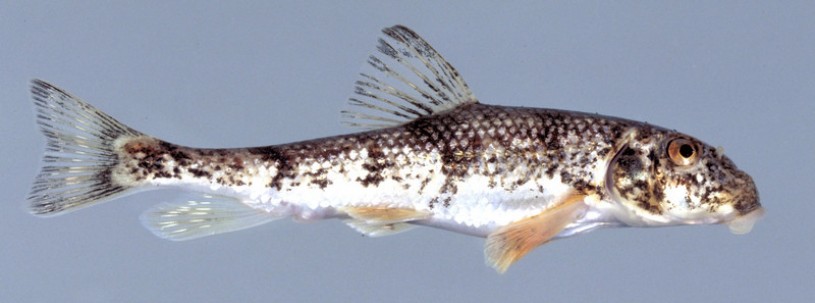
Lots of fish have unfortunate common names, but to me, the hog suckers stands out as being among the most unfortunate. I am not sure what a hog sucker is, but the mental imagery that comes to mind when I hear that name is not very appealing to me. The Roanoke Hog Sucker itself, however, is perfectly fine. They have this nice salt-and-pepper coloration pattern with little orange fins. Their look is definitely better than the name suggests.
The Roanoke Hog Sucker, Hypentelium roanokense, was described from the Roanoke River in 1947, and is found only in the Roanoke River and Dan River systems in Virginia and North Carolina. It is smallest of the 75 species of catostomids, reaching a size of about six inches. These fish are a bit more specialized than their cousins out west that we have already mentioned. While the Tahoe Sucker and Bridgelip Sucker are found in calm waters, the Roanoke Hog Sucker prefers fast-moving waters. As suckers, they still feed on insect larvae, worms, and crustaceans. They specialize in picking out tasty treats from large gravel and cobbles.
Roanoke Darter - Percina roanoka
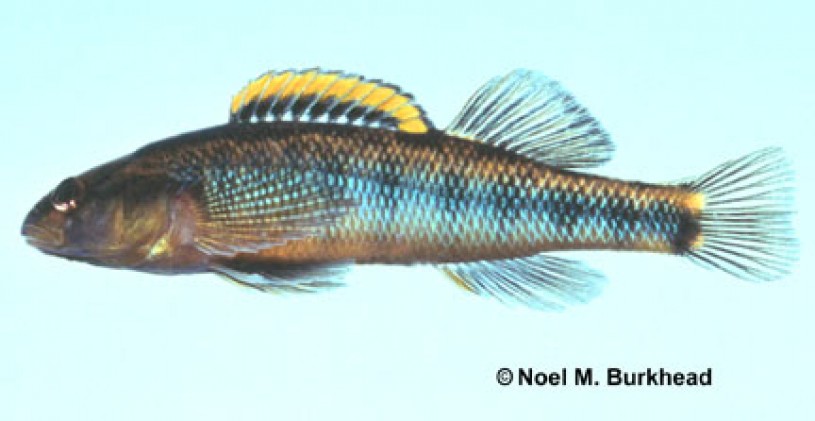
As common as darters are in Appalachian Mountain streams, it is perhaps not surprising to find one named the Roanoke Darter, Percina roanoka. This darter is found in the Roanoke, Neuse, and Tar River systems of the Virginia and North Carolina.
The best time to view darters, and many other species of freshwater fishes, is during the spring. This is because most of these fish spawn during the spring, and they have accented breeding colors during spawning season for mate attraction. If you really want to see these fish pop, you need to see them in the spring. Darters, in particular, can be quite colorful, with bright reds, oranges, blues, and greens. These colors are toned down during the rest of the year. A fish that looks like a Monet painting in the spring is just shades of grey during the rest of the year. The Roanoke Darter is one of many that have incredible colors during the breeding season, notably with a bright orange swath on the first dorsal fin, accented by a deep black swath underneath. Super stylish.
Candy Darter – Etheostoma osburni
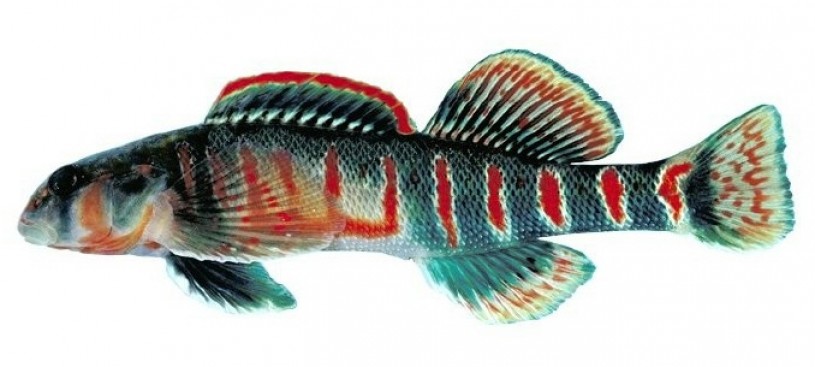
Speaking of bright, colorful fishes, there are few darters more attractive than the Candy Darter, Etheostoma osburni. When it came time for VIMS to commemorate 50 years of the Roanoke Round-Up, this the fish they chose to put on the back of a t-shirt.
The Candy Darter is found only in the New River system of Virginia and West Virginia, and there in only a few specialized habitats. They are believed to be diminishing in these habitats and are listed as Near Threatened on the IUCN Red List of Threatened Species. There is some concern over the long-term survival of this species. Fortunately, there is a lot of ongoing research into the ecology of Candy Darters, including studies on things like habitat use and population genetics, all aimed at improving conservation measures for this fish.
The fish diversity highlighted here represents only a fraction of the phenomenal diversity across North America. There are 1,000 fish species in North America (with more being described each year), and we only talked about ten! Every stream, every river, every pond, and every lake in the US has some great fish with wonderful stories to tell.
To catch up with the entire Fishes Across America series, have fun reading about pupfish in Death Valley National Park, suckers in Lake Tahoe, different suckers in Idaho, killifish on the plains, and darters in Kentucky below.
